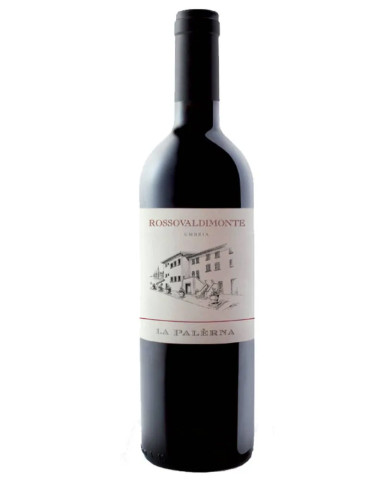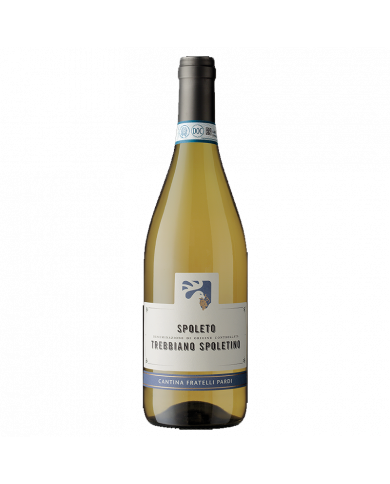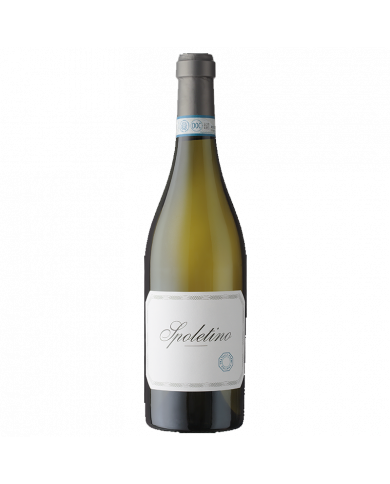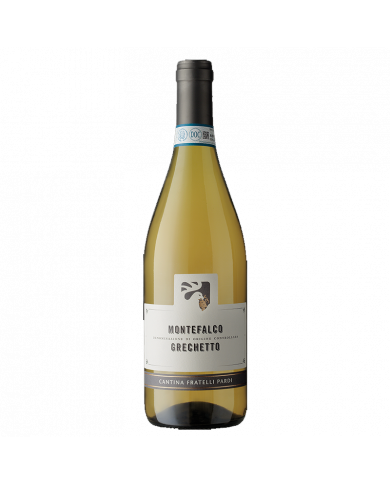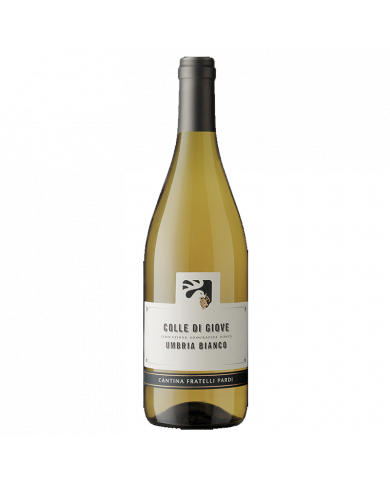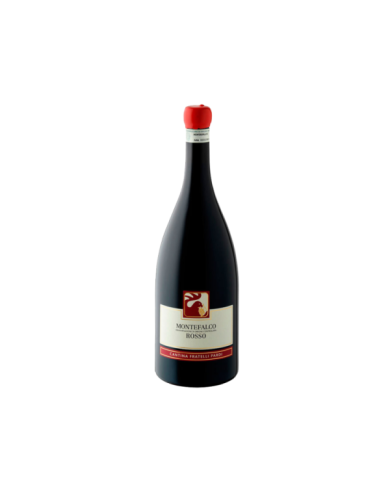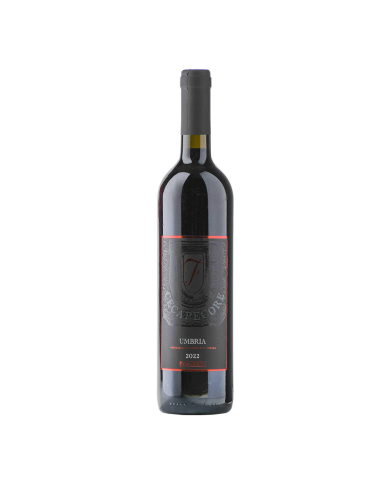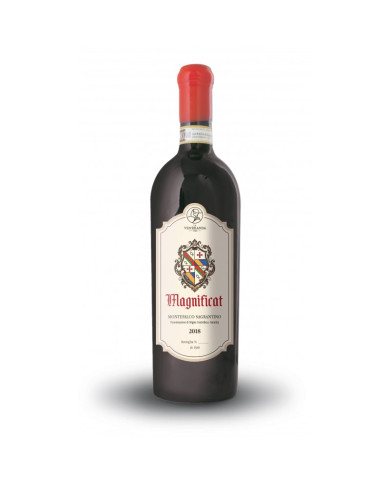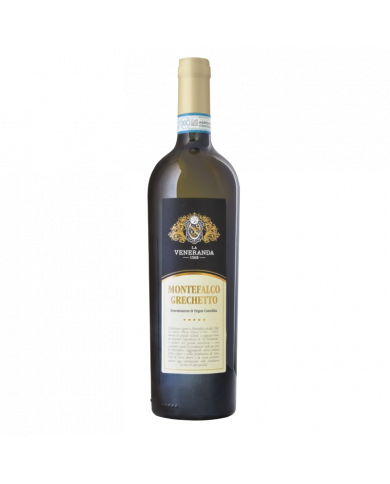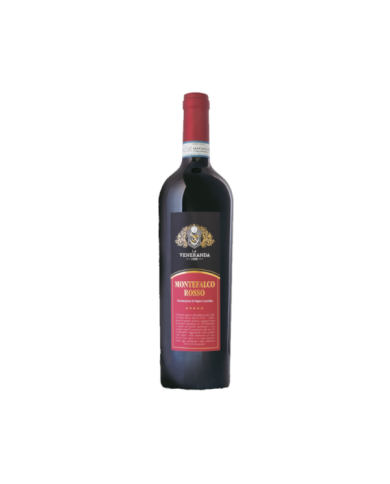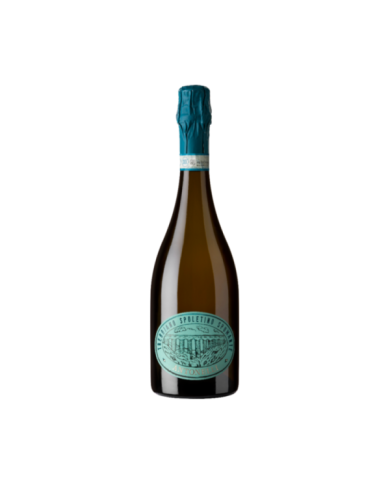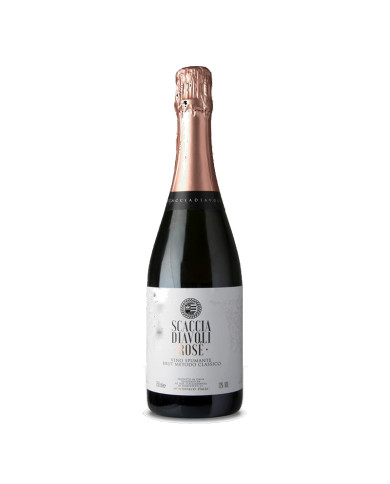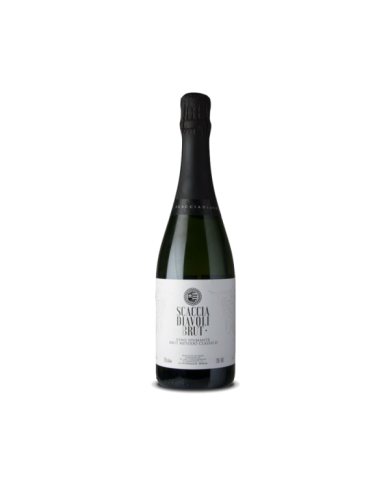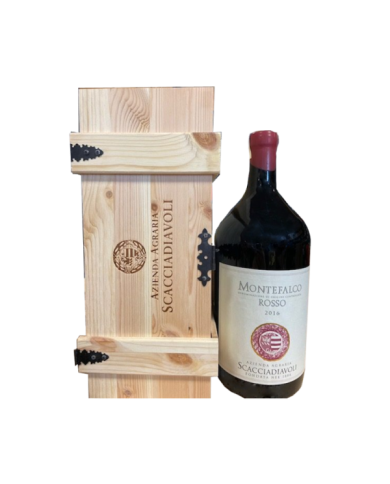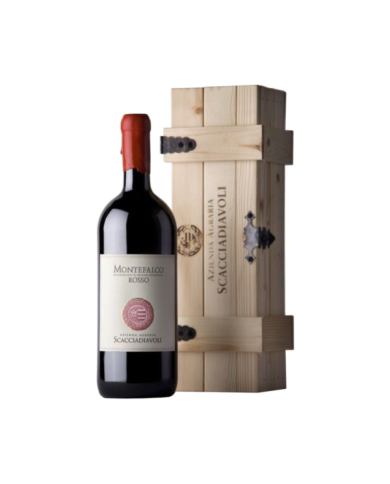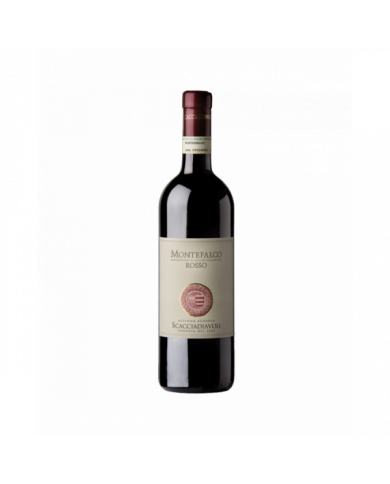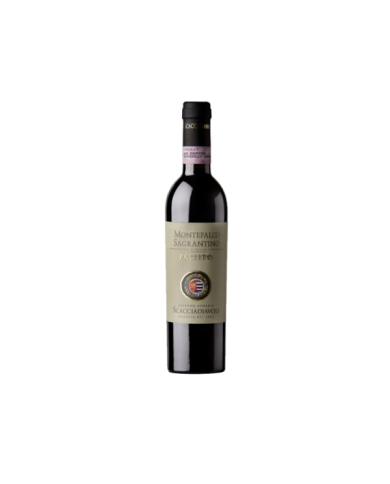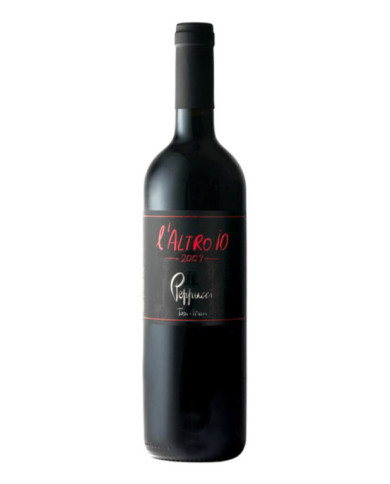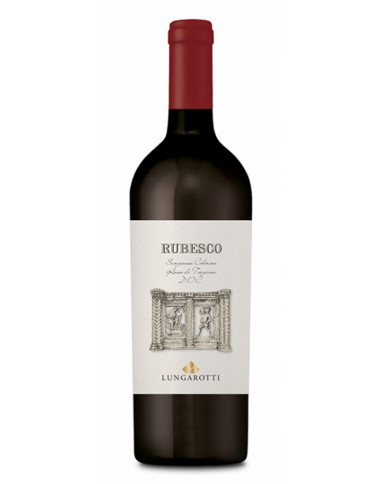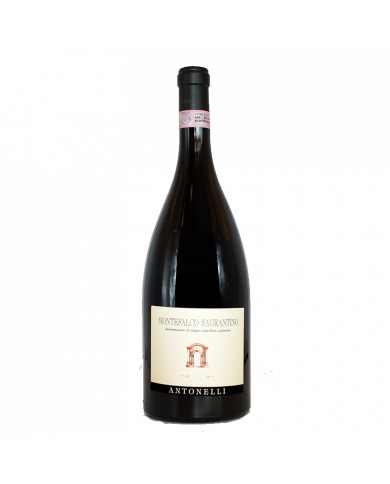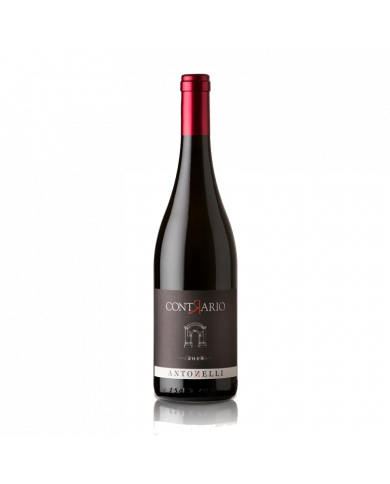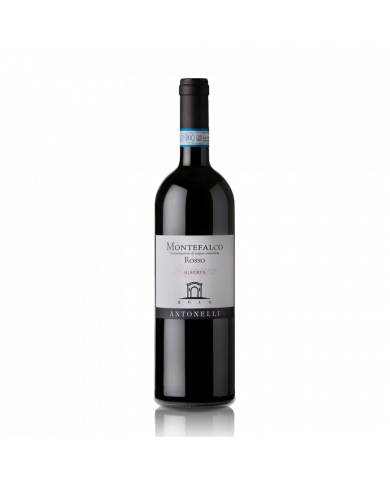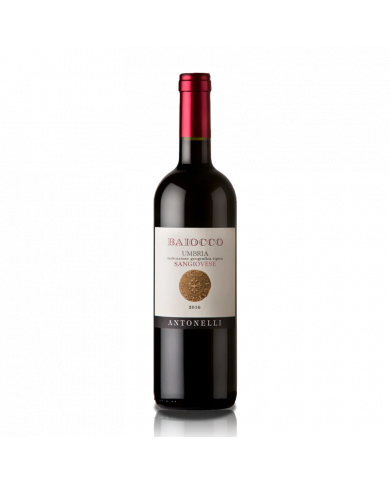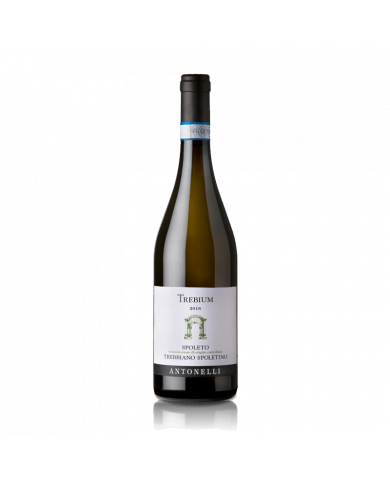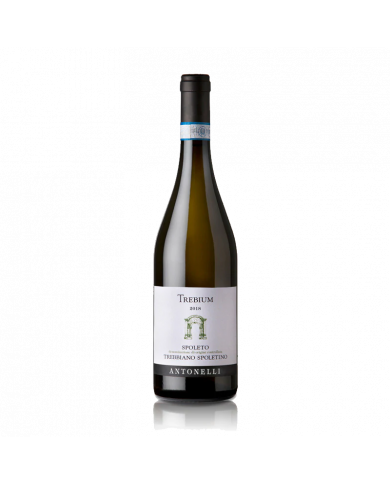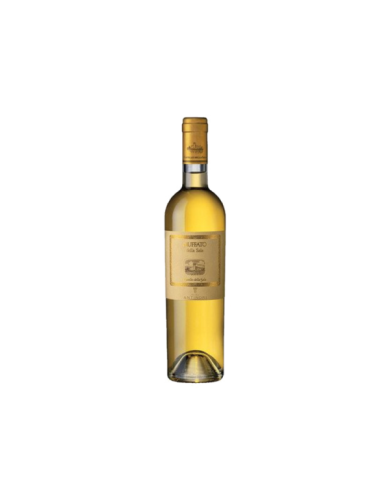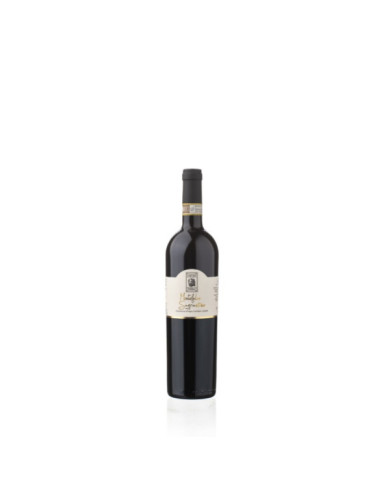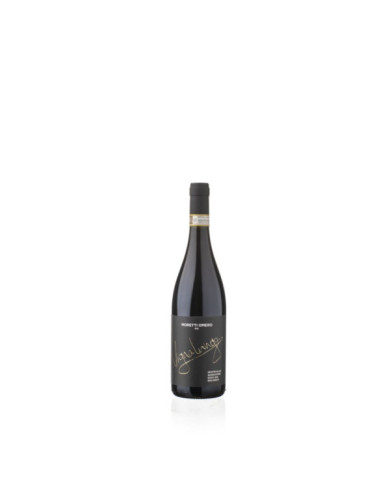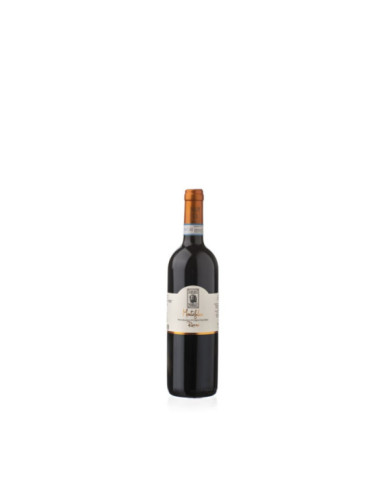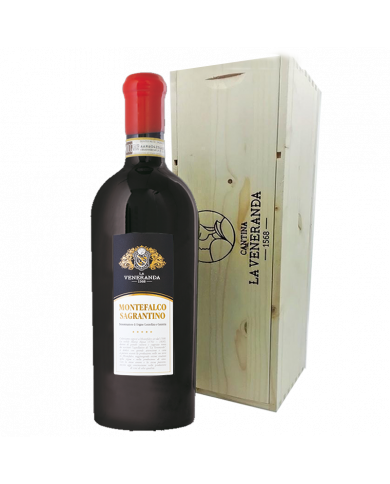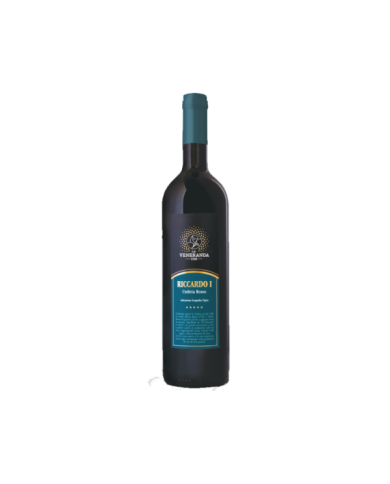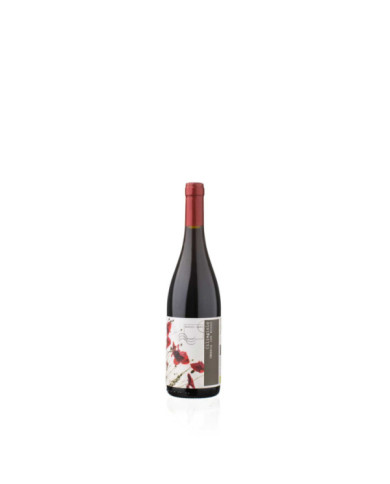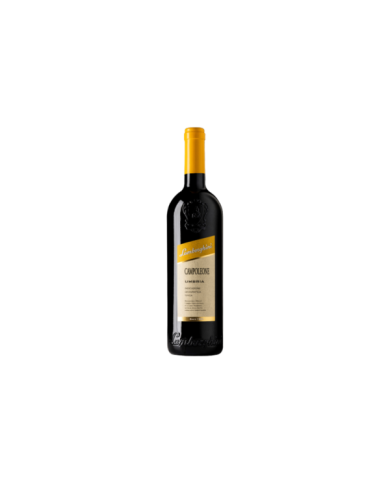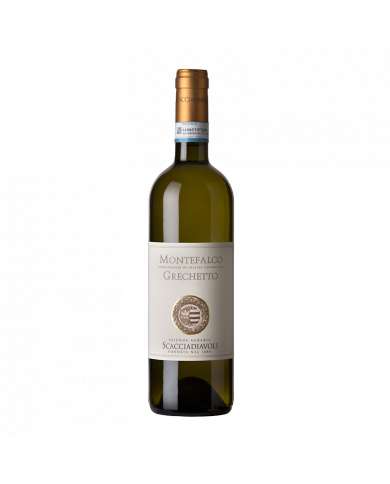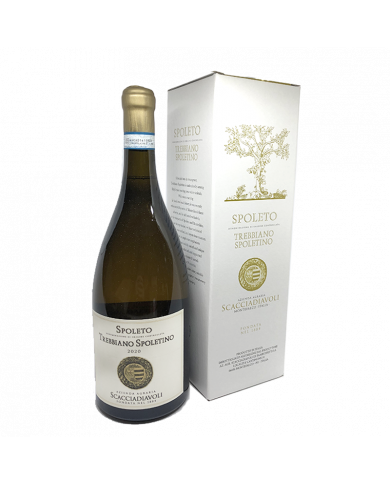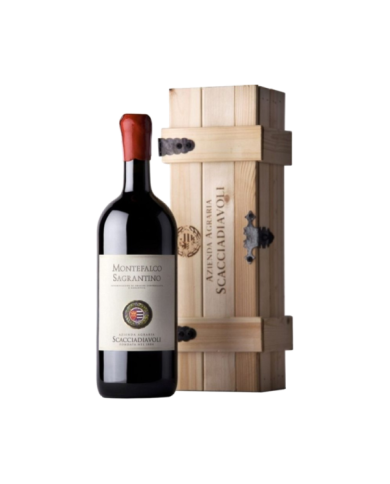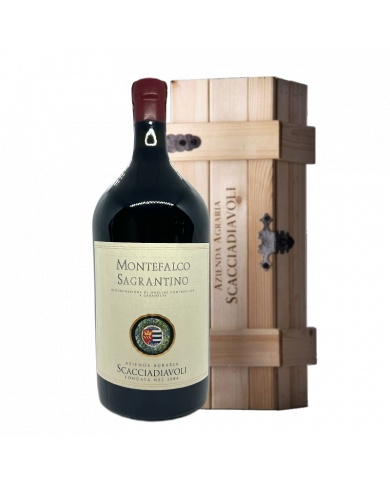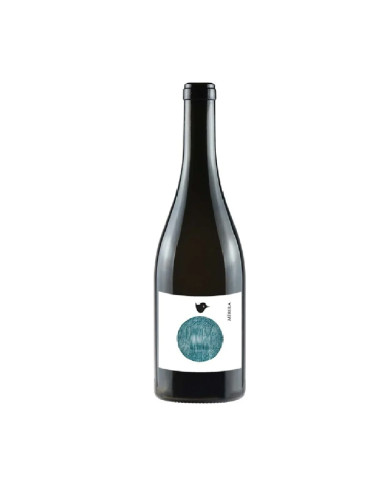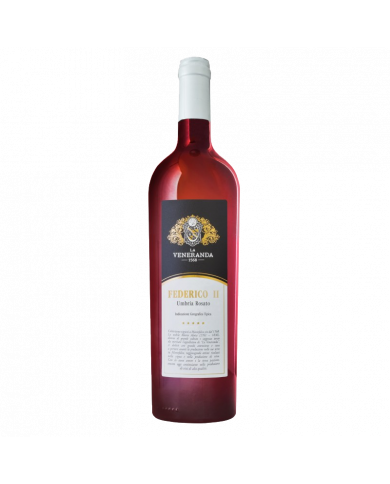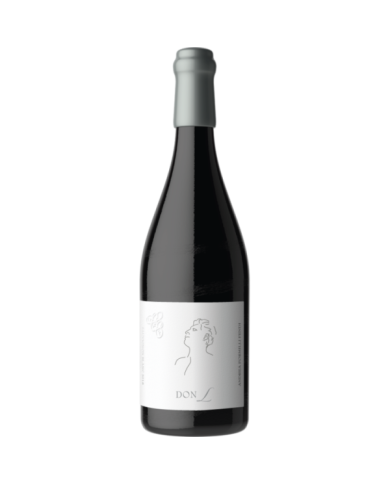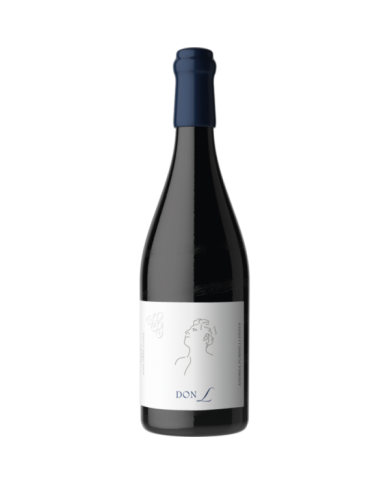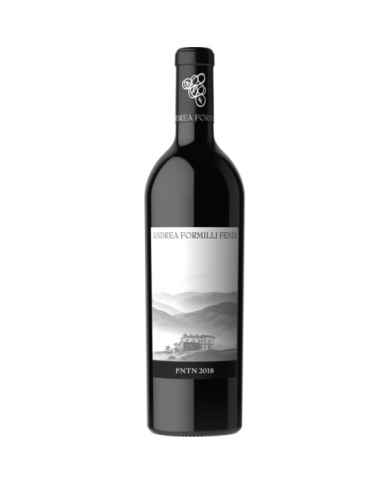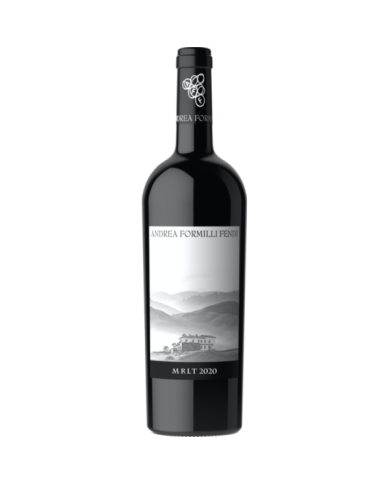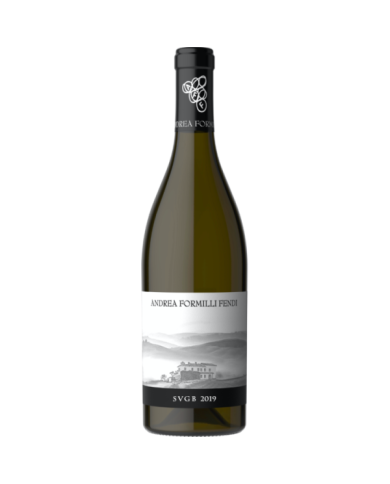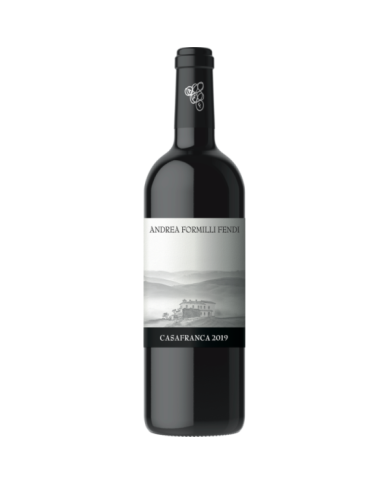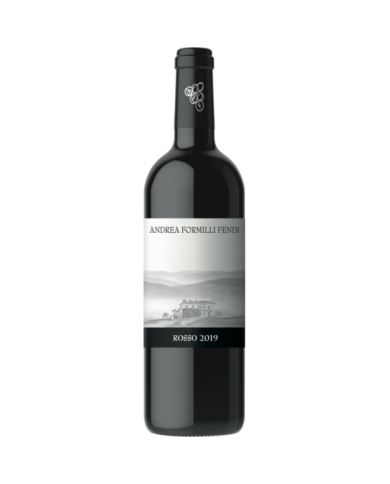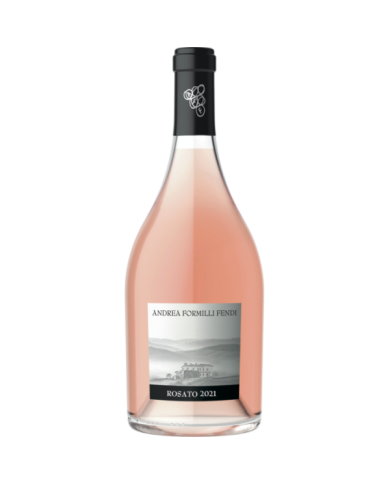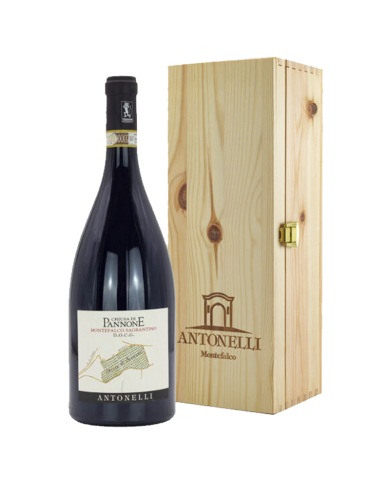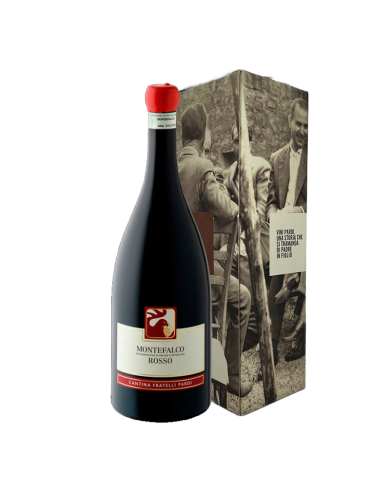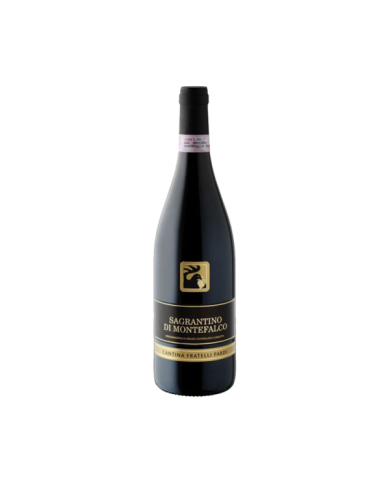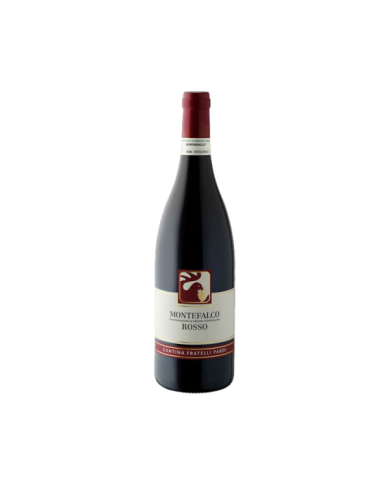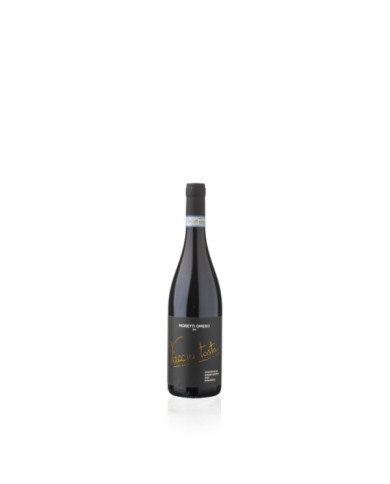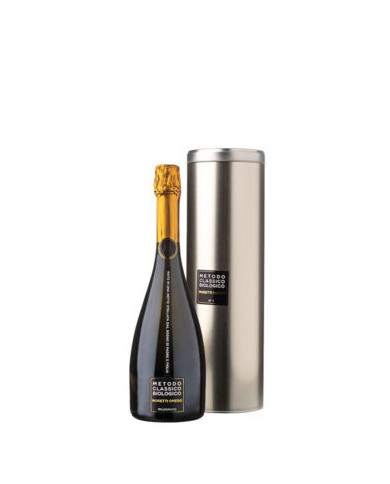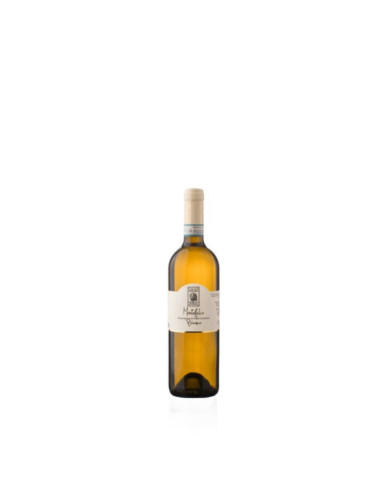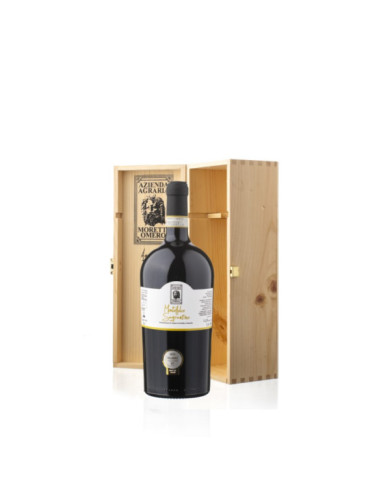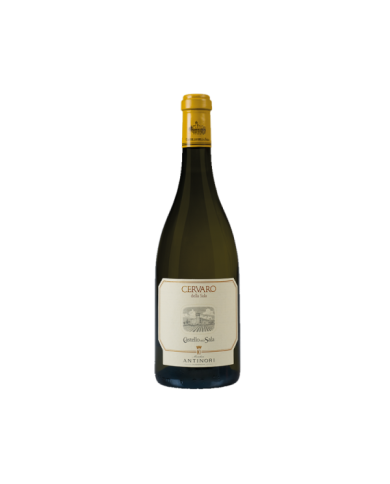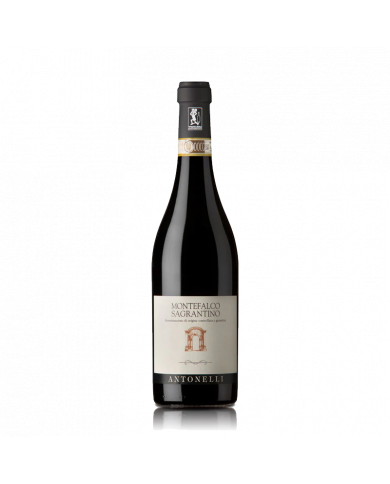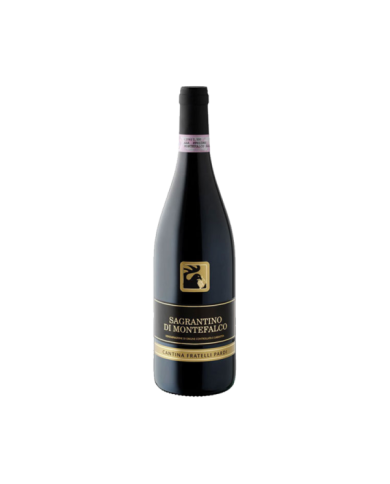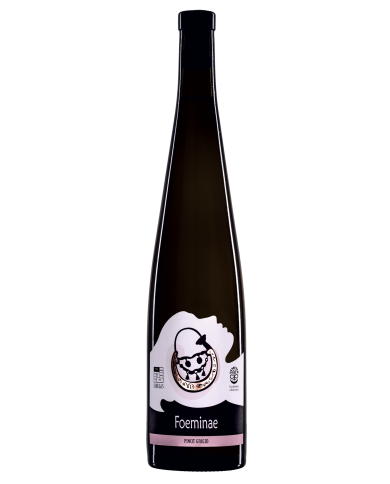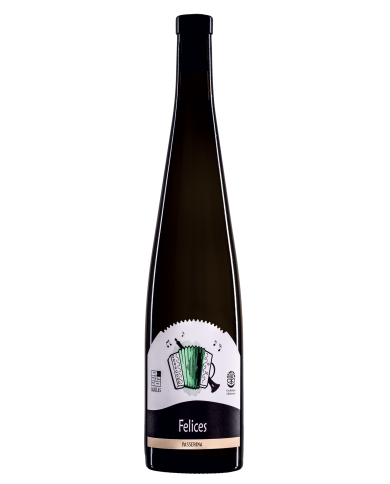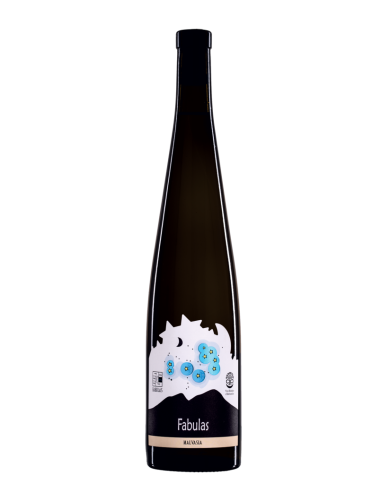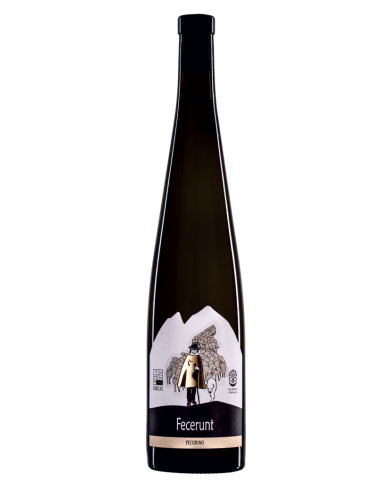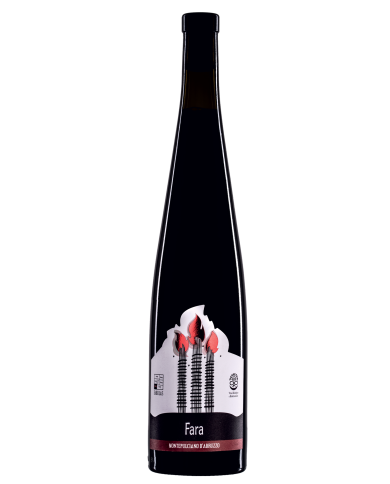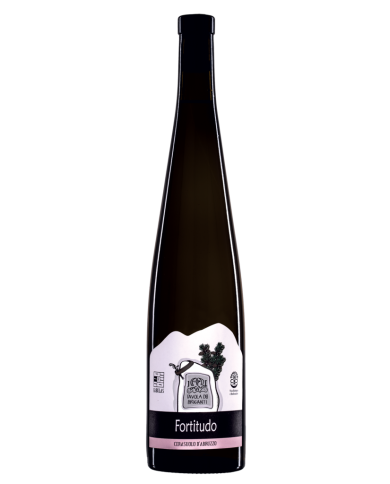Selection of the free-run juice with light pressure. Fermentation at temp. controlled (18 ┬░) followed by 8 months on the fine lees.
Fermentation at temp. constant (20 ┬░) for 20 days in stainless steel. The bottled wine remains for at least two months in the cellar.
Fermentation at temp. constant (20 ┬░) for 20 days in stainless steel. The bottled wine remains for at least two months in the cellar.
It dresses the glass in a beautiful deep ruby red. The nose is first set on dark fruit in jam and in alcohol, such as currants, black cherries and plums, then followed by intense references to green pepper, cocoa, rhubarb, licorice and chinotto. The mouth is extremely consistent with the nose, and is powerful but well managed in the tannic texture, warm, with excellent body and long persistence.
Wine with an intense ruby color with nuances that turn towards garnet. The nose opens with the characteristic hints of wild strawberries and raspberry, strawberry and morello cherries, with a finish of sweet spices: vanilla, sweet pipe tobacco leaf and coffee. In the mouth we find it dry, the typical tannins of Sagrantino are modulated by the freshness and good alcohol content that make it a well-structured wine. Available in different sizes (from 0.75 up to 5 liters) and in special packs (min. Two bottles) or to be packaged for original gift ideas or unforgettable memories.
Entirely produced with Grechetto grapes, this wine has a straw yellow color. Particularly fine on the nose with a bouquet that develops between hints of elderflower, broom, yellow pulp fruit: peach, mango; With a finish of aromatic herbs reminiscent of thyme, sage. Its alternation between flavor and freshness is excellent.
Wine with an intense ruby color. This wine is the result of a perfect blend of three grape varieties: Sangiovese, Merlot and Sagrantino. The nose opens with a hint of red fruits, harmonized by the presence of Sagrantino which completes the tones with sensations of wild strawberry and raspberry. Wine with good structure and alcoholic strength, with good freshness and flavor. Harmonious and well balanced wine.
Very versatile ros├®. Made with only Sagrantino grapes. Harvest by hand, soft pressing of the grapes, within six hours of harvesting. First slow fermentation, at a controlled temperature to preserve the primary aromas. Second fermentation and maturation on the yeasts strictly according to the Classic method with natural fermentation in the bottle, for at least 18 months.
Not only great reds are born from the Sagrantino grape. Vinified in white it is an original base for Scacciadiavoli 's Spumante Brut Classic Method. The characteristics of the wine are revealed in new forms: the aromas are fresh and delicate and the tannins, typical of Sagrantino, participate in the structure by joining the bubbles.
Wine of excellent workmanship. Intense ruby red color, ample, elegant perfume with hints of cherry, soft and voluminous flavor. In the ancient tradition of the territory of Montefalco, after selecting the grapes for the production of Montefalco Sagrantino, all the other red varieties were harvested for the composition of a fresher and easy-to-match wine. Scacciadiavoli takes inspiration from this tradition and perfects it by adding that touch that makes this wine even more lovable.
Wine of excellent workmanship. Intense ruby red color, ample, elegant perfume with hints of cherry, soft and voluminous flavor. In the ancient tradition of the territory of Montefalco, after selecting the grapes for the production of Montefalco Sagrantino, all the other red varieties were harvested for the composition of a fresher and easy-to-match wine. Scacciadiavoli takes inspiration from this tradition and perfects it by adding that touch that makes this wine even more lovable.
Excellent wine. Intense ruby red color, full, elegant bouquet with hints of cherry, soft and voluminous flavor. In the ancient tradition of the Montefalco area, after having selected the grapes for the production of Montefalco Sagrantino, all the other red varieties were picked for the composition of a fresher and easy-to-match wine. Scacciadiavoli is inspired by this tradition and perfects it by adding that touch that makes this wine even more lovable.
This sweet wine has a unique style. The red color is impenetrable, the scent evokes blackberries, dried fruit and cinnamon, the taste is of a singular balance. In fact, the dense texture of tannins imprisons acidity and sweetness and everything is confused, creating a gustatory sensation of harmonious fullness. It is thanks to the drying of Sagrantino grapes on racks that such a concentration is obtained. Originally Sagrantino grapes were used only for the making of this sweet wine, drunk on the occasion of religious ceremonies in the villages of the area.
The Sagrantino vine, cultivated for centuries exclusively in Montefalco, seems to have been brought there from Asia Minor by the followers of S. Francesco.
The Sagrantino vine, cultivated for centuries exclusively in Montefalco, seems to have been brought there from Asia Minor by the followers of S. Francesco.
It represents a new way of interpreting the typical grape of Montefalco, cultivated and vinified in such a way as to enhance the freshest aromatic peculiarities and to obtain a wine that can be enjoyed from a young age.
The Riserva version of our Montefalco Rosso, vinified only in the best years with a long aging in large barrels. A blend based only on Sangiovese and the typical grape of Montefalco. In previous years, other red grape varieties were also used.
A young and lively interpretation of Umbrian Sangiovese, a wine that can be enjoyed throughout the meal thanks to its freshness and ease of drinking.
Trebbiano Spoletino is a typical variety of the territory that extends between Montefalco, Trevi and Spoleto; perhaps the name derives from ŌĆ£TrebiumŌĆØ, Trevi in Latin.
Trebbiano Spoletino is a typical variety of the territory that extends between Montefalco, Trevi and Spoleto; perhaps the name derives from ŌĆ£TrebiumŌĆØ, Trevi in Latin.
The Muffato del Castello della Sala, one of the estates of the Marchesi Antinori , is a bright and persuasive sweet wine. On the nose it is a wine that reveals itself of great aromatic and gustatory intensity, with hints of candied fruit, honey, iodized and almost marine hints on a citrus hint. On the palate it is enveloping and the botrytizing process gives a sweet sensation well integrated into that of freshness that emerges after the sip
Vibrant ruby red. Small red fruits on the nose, including the typical hint of blackberries. Balsamic hints. Elegant and powerful. Persistent finish with returns of berries and spices. Fermentation 15 days. Maceration 20 days on the skins. Contact with fine lees for 6 months. Batonnage.
Ruby red color with deep graphite tips. Dried plum, blackberry jam on the nose. Complex and rich in the mouth, with cloves and bitter chocolate on the finish. Persistent and pleasant in the dry finish.
Central core of succulent wild berries, violet flowers. Full-bodied wine with a fine tannic texture. Fruity finish with light spiciness.
Wine with an intense ruby color with nuances that turn towards garnet. The nose opens with the characteristic hints of wild strawberries and raspberry, strawberry and morello cherries, with a finish of sweet spices: vanilla, sweet pipe tobacco leaf and coffee. In the mouth we find it dry, the typical tannins of Sagrantino are modulated by the freshness and good alcohol content that make it a well-structured wine. Available in different sizes (from 0.75 up to 5 liters) and in special packs (min. Two bottles) or to be packaged for original gift ideas or unforgettable memories.
Riccardo I Umbria Rosso IGT wine from the La Veneranda winery . Wine with a characteristic intense ruby color. The nose releases all the essence of Sangiovese. It opens with hints of fresh red berry fruit: black cherry and cherry, to move on to wild fruit, such as strawberry and spices such as star anise and vanilla. In the mouth the fruit and carnality of Sangiovese are pleasant, modulated by the flavor and by a subtle and pleasant tannin.
Wine with an intense ruby color with nuances that turn towards garnet. The nose opens with the characteristic hints of wild strawberries and raspberry, strawberry and morello cherries, with a finish of sweet spices: vanilla, sweet pipe tobacco leaf and coffee. In the mouth we find it dry, the typical tannins of Sagrantino are modulated by the freshness and good alcohol content that make it a well-structured wine. Available in different sizes (from 0.75 up to 5 liters) and in special packs (min. Two bottles) or to be packaged for original gift ideas or unforgettable memories.
Red fruit, notes of raspberry and cherry. Subtle tannins, fresh finish. Certified vegan wine. Fermentation in steel with 15 days maceration on the skins.
Central core of succulent wild berries, violet flowers. Full-bodied wine with a fine tannic texture. Fruity finish with light spiciness.
Very versatile ros├®. Made with only Sagrantino grapes. Harvest by hand, soft pressing of the grapes, within six hours of harvesting. First slow fermentation, at a controlled temperature to preserve the primary aromas. Second fermentation and maturation on the yeasts strictly according to the Classic method with natural fermentation in the bottle, for at least 18 months.
Selection of the free-run juice with light pressure. Fermentation at temp. controlled (18 ┬░) followed by 8 months on the fine lees.
COLORE Rosso violaceo cupo,impenetrabile. OLFATTO Note di frutta matura, tabacco, cioccolato. GUSTO Profonde sensazioni di caff├©,tabacco, cioccolato, frutti rossi
Montefalco Grechetto doc is a dry wine that presents a range of lively aromas on the nose as well as in the mouth. Sweet fruit, white and yellow flowers and a good acidic freshness keep it alive and persistent. A native white grape of Umbria, in Scacciadiavoli it is vinified in purity. It accompanies hot summer days served at the right temperature and goes well with first courses or light main courses all year round. Wine to drink young. The presence of deposits in the bottom of the bottle is natural.
To complete the range of Scacciadiavoli wines, a full-bodied and complex white was missing, to be paired with richer meals. Montefalco Bianco Scacciadiavoli is born from the assembly of Trebbiano Spoletino, Grechetto and Chardonnay (in accordance with the DOC disciplinary). A crunchy and tasty wine, which focuses on pleasantness. Wine to drink young or aged for a few years. The presence of deposits in the bottom of the bottle is natural.
That the Trebbiano Spoletino grape is of high enological interest is now a certain fact. It is an ancient vine that has only recently been rediscovered. It can be grown in the territory of Spoleto and Montefalco. In our cellar we have aimed to capture the finer and at the same time intriguing soul of this grape. We have given space to its changing and original aromas with a vinification in amphora that respects these characteristics and then we have strengthened its expressive character with an aging in untoasted wood and amphora for at least 9 months. In our opinion the result is that of a great white wine for aging, capable of surprising at every sip for its richness of facets.
That the Trebbiano Spoletino grape is of high enological interest is now a certain fact. It is an ancient vine that has only recently been rediscovered. It can be grown in the territory of Spoleto and Montefalco. In our cellar we have aimed to capture the finer and at the same time intriguing soul of this grape. We have given space to its changing and original aromas with a vinification in amphora that respects these characteristics and then we have strengthened its expressive character with an aging in untoasted wood and amphora for at least 9 months. In our opinion the result is that of a great white wine for aging, capable of surprising at every sip for its richness of facets.
The color is deep, the bouquet is sensual and the body is vigorous. Wine whose refinement is appreciated when young, when fruit and spices blend with the taste of wood, in which Sagrantino has been elevated. But it is after a few years that its success is fully appreciated, when balsamic notes intervene and the tannins soften: thus we discover a wine with a great personality. Montefalco Sagrantino DOCG is suitable for long aging: 20 and more years. Rich in polyphenols which have antioxidant and therefore beneficial properties. The presence of deposits in the bottom of the bottle is natural. Sagrantino Di Montefalco Scacciadiavoli
The color is deep, the bouquet is sensual and the body is vigorous. Wine whose refinement is appreciated when young, when fruit and spices blend with the taste of wood, in which Sagrantino has been elevated. But it is after a few years that its success is fully appreciated, when balsamic notes intervene and the tannins soften: thus we discover a wine with a great personality. Montefalco Sagrantino DOCG is suitable for long aging: 20 and more years. Rich in polyphenols which have antioxidant and therefore beneficial properties. The presence of deposits in the bottom of the bottle is natural. Sagrantino Di Montefalco Scacciadiavoli
Wine with an intense ruby color with nuances that turn towards garnet. The nose opens with the characteristic hints of wild strawberries and raspberry, strawberry and morello cherries, with a finish of sweet spices: vanilla, sweet pipe tobacco leaf and coffee. In the mouth we find it dry, the typical tannins of Sagrantino are modulated by the freshness and good alcohol content that make it a well-structured wine. Available in different sizes (from 0.75 up to 5 liters) and in special packs (min. Two bottles) or to be packaged for original gift ideas or unforgettable memories.
Intense ros├® wine. The nose opens with the characteristic hints of wild rose and red fruits, raspberries and strawberries. In the mouth we find it dry and with a strong character typical of the variety.
Entirely produced with Grechetto grapes, this wine has a straw yellow color. Particularly fine on the nose with a bouquet that develops between hints of elderflower, broom, yellow pulp fruit: peach, mango; With a finish of aromatic herbs reminiscent of thyme, sage. Its alternation between flavor and freshness is excellent.
Wine with an intense ruby color. This wine is the result of a perfect blend of three grape varieties: Sangiovese, Merlot and Sagrantino. The nose opens with a hint of red fruits, harmonized by the presence of Sagrantino which completes the tones with sensations of wild strawberry and raspberry. Wine with good structure and alcoholic strength, with good freshness and flavor. Harmonious and well balanced wine.
Obtained thanks to the drying process of Sagrantino grapes.
Very ample wine, with great structure with a long aromatic persistence and a typical tannic finish supported by a pleasant sweetness.
Wine with great evolutionary capacities in the bottle. In fact, it can be refined in the bottle for many years, significantly improving.
By "closed" was meant a circumscribed olive grove often delimited by stone walls. Chiusa di Pannone was also the same, while today it is the single vineyard used exclusively for the homonymous wine.
Trebbiano Spoletino is a typical variety of the territory that extends between Montefalco, Trevi and Spoleto; perhaps the name derives from ŌĆ£TrebiumŌĆØ, Trevi in Latin.
It dresses the glass in a beautiful deep ruby red. The nose is first set on dark fruit in jam and in alcohol, such as currants, black cherries and plums, then followed by intense references to green pepper, cocoa, rhubarb, licorice and chinotto. The mouth is extremely consistent with the nose, and is powerful but well managed in the tannic texture, warm, with excellent body and long persistence.
Intense, deep ruby red, at times impenetrable to the eye. It opens to the nose with clear scents of dark, overripe fruit, reminiscent of currants, plum jam and sour cherries in alcohol. Tertiary tones then emerge, leading the memory towards Christmas spices, nutmeg, tobacco, coffee and cocoa. The palate is set on an imposing tannic texture, which is worked to the chisel. Important body, warm mouthfeel and long persistence. Perfect with game, it is excellent with jugged hare.
Selection of the free-run juice with light pressure. Fermentation at temp. controlled (18 ┬░) followed by 8 months on the fine lees.
It dresses the glass in a beautiful deep ruby red. The nose is first set on dark fruit in jam and in alcohol, such as currants, black cherries and plums, then followed by intense references to green pepper, cocoa, rhubarb, licorice and chinotto. The mouth is extremely consistent with the nose, and is powerful but well managed in the tannic texture, warm, with excellent body and long persistence. Also ideal for the whole meal with the courses of the land cuisine, it is to be tried as an accompaniment to rabbit alla cacciatora.
Fermentation at temp. constant (20 ┬░) for 20 days in stainless steel. The bottled wine remains for at least two months in the cellar.
Montefalco Grechetto doc is a dry wine that presents a range of lively aromas on the nose as well as in the mouth. Sweet fruit, white and yellow flowers and a good acidic freshness keep it alive and persistent. A native white grape of Umbria, in Scacciadiavoli it is vinified in purity. It accompanies hot summer days served at the right temperature and goes well with first courses or light main courses all year round. Wine to drink young. The presence of deposits in the bottom of the bottle is natural.
Red fruit, notes of raspberry and cherry. Subtle tannins, fresh finish. Certified vegan wine. Fermentation in steel with 15 days maceration on the skins.
Vibrant yellow color with incessant and persistent perlage. On the nose bread crust, white peach, almond blossom and hazelnut notes. Great grace and balance on the palate, thanks to a beautiful structure enhanced by a pungent fresh-savory contrast, which returns the fruity finish in the finish. Notes of hazelnut typical of the grape. Truthful, clear and representative of the area.
Organic Millesimato Classic Method ŌĆō Vibrant yellow color with incessant and persistent perlage. On the nose bread crust, white peach, almond blossom and hazelnut notes. Great grace and balance on the palate, thanks to a beautiful structure enhanced by a pungent fresh-savory contrast, which returns the fruity finish in the finish. Metal case.
Bright gold colour. White peach and mango on the nose. Notes of white flowers such as chamomile, acacia and freesia stand out. Notes also of sage. Soft and persistent. The grapes are softly pressed, then the must undergoes static clarification. Subsequently it is fermented in steel tanks at a controlled temperature of 20┬░C. Natural decantation for three months in steel.
Olfactory elegance with hints of yellow pulp fruit, almond flowers. Nice tension towards hazelnut notes. In the mouth breadth and enveloping texture. Long finish that is revived thanks to the acidity of the Spoletino (Trebbiano Spoletino). The grapes are softly pressed, then the must undergoes static clarification. Subsequently it is fermented in steel tanks at a controlled temperature of 20┬░C. Natural decantation for three months in steel.
Ruby red color with deep graphite tips. Dried plum, blackberry jam on the nose. Complex and rich in the mouth, with cloves and bitter chocolate on the finish. Persistent and pleasant in the dry finish.
Vibrant ruby red. Small red fruits on the nose, including the typical hint of blackberries. Balsamic hints. Elegant and powerful. Persistent finish with returns of berries and spices. Fermentation 15 days. Maceration 20 days on the skins. Contact with fine lees for 6 months. Batonnage.
Vibrant ruby red. Small red fruits on the nose, including the typical hint of blackberries. Balsamic hints. Elegant and powerful. Persistent finish with returns of berries and spices. Fermentation 15 days. Maceration 20 days on the skins. Contact with fine lees for 6 months. Batonnage.
Central core of succulent wild berries, violet flowers. Full-bodied wine with a fine tannic texture. Fruity finish with light spiciness.
For yourself or for a special gift, try our luxury pack: uniqueness, excellence and refinement.
Refined and intense, structured and persistent , it is obtained from Chardonnay grapes with a small percentage of Grechetto, a native grape that brings acidity and binds it even more to the territory. The vinification takes place in Allier and Troncaise barriques, where the wine then matures for six months before being bottled and left to refine for another 10 months.
That the Trebbiano Spoletino grape is of high enological interest is now a certain fact. It is an ancient vine that has only recently been rediscovered. It can be grown in the territory of Spoleto and Montefalco. In our cellar we have aimed to capture the finer and at the same time intriguing soul of this grape. We have given space to its changing and original aromas with a vinification in amphora that respects these characteristics and then we have strengthened its expressive character with an aging in untoasted wood and amphora for at least 9 months. In our opinion the result is that of a great white wine for aging, capable of surprising at every sip for its richness of facets.
Refined and intense, structured and persistent , it is obtained from Chardonnay grapes with a small percentage of Grechetto, a native grape that brings acidity and binds it even more to the territory. The vinification takes place in Allier and Troncaise barriques, where the wine then matures for six months before being bottled and left to refine for another 10 months.
Refined and intense, structured and persistent , it is obtained from Chardonnay grapes with a small percentage of Grechetto, a native grape that brings acidity and binds it even more to the territory. The vinification takes place in Allier and Troncaise barriques, where the wine then matures for six months before being bottled and left to refine for another 10 months.
Refined and intense, structured and persistent , it is obtained from Chardonnay grapes with a small percentage of Grechetto, a native grape that brings acidity and binds it even more to the territory. The vinification takes place in Allier and Troncaise barriques, where the wine then matures for six months before being bottled and left to refine for another 10 months.
Refined and intense, structured and persistent , it is obtained from Chardonnay grapes with a small percentage of Grechetto, a native grape that brings acidity and binds it even more to the territory. The vinification takes place in Allier and Troncaise barriques, where the wine then matures for six months before being bottled and left to refine for another 10 months.
Refined and intense, structured and persistent , it is obtained from Chardonnay grapes with a small percentage of Grechetto, a native grape that brings acidity and binds it even more to the territory. The vinification takes place in Allier and Troncaise barriques, where the wine then matures for six months before being bottled and left to refine for another 10 months.
Refined and intense, structured and persistent , it is obtained from Chardonnay grapes with a small percentage of Grechetto, a native grape that brings acidity and binds it even more to the territory. The vinification takes place in Allier and Troncaise barriques, where the wine then matures for six months before being bottled and left to refine for another 10 months.
Refined and intense, structured and persistent , it is obtained from Chardonnay grapes with a small percentage of Grechetto, a native grape that brings acidity and binds it even more to the territory. The vinification takes place in Allier and Troncaise barriques, where the wine then matures for six months before being bottled and left to refine for another 10 months.
The Sagrantino vine, cultivated for centuries exclusively in Montefalco, seems to have been brought there from Asia Minor by the followers of S. Francesco.
Sweet wine obtained by drying grapes on racks. It is the traditional version of Sagrantino. The name derives from the Latin sacer: sacred wine consumed during the feasts of the Christian tradition.
Excellent wine. Intense ruby red color, full, elegant bouquet with hints of cherry, soft and voluminous flavor. In the ancient tradition of the Montefalco area, after having selected the grapes for the production of Montefalco Sagrantino, all the other red varieties were picked for the composition of a fresher and easy-to-match wine. Scacciadiavoli is inspired by this tradition and perfects it by adding that touch that makes this wine even more lovable.
Discover the excellent wines of Umbria: taste the authenticity of a territory rich in history!
Umbria is an Italian region with a very ancient history, which extends between Lazio and the Marches, and its rural culture has been deeply marked by agriculture. For centuries, this region has produced wines of excellent quality, and it is still today one of the main centers of Italian wine production.
The excellent wines of Umbria are of great quality and can be tasted throughout the region. The best known varieties are Sagrantino, Grechetto, Canaiolo and Sangiovese, but there are also other local vines such as Montepulciano, Ciliegiolo, Cabernet Sauvignon and Merlot.
The wines produced in Umbria are of great quality, but also of great value: the wine production of the region is in fact recognized worldwide. There are many vines that have been planted in Umbria and which have adapted to the soils and climate of the region, which has made it possible to produce fine wines.
Discover the wine excellences of Umbria: tasting and history
The excellent wines of Umbria are a unique experience to discover. If you are passionate about wine, you cannot miss tasting the wines of the region: the flavours, aromas and sensations that can be savored during a tasting are truly unique, and will allow you to discover the most hidden secrets of Umbrian wine production.
To fully enjoy this area, you don't just have to taste the wines: one way to discover Umbria is also to visit the places where wine is produced. There are numerous Umbrian wineries and wineries that offer guided tours, where you can learn about the history and traditions of this land, discover its beauty and secrets, and taste the wines produced in the region.
The wine excellences of Umbria: the finest vines
Among the most appreciated wines of Umbria are Sagrantino, Grechetto, Canaiolo and Sangiovese. Sagrantino is a red grape variety of great value, which was declared a "superior quality wine" in 1992. It is a well-structured wine, with an intense ruby red color and spicy aromas, with notes of ripe fruit and hints of vanilla.
Grechetto is an aromatic white vine, with a straw yellow colour, intense and complex aromas with notes of exotic fruit, white flowers and peach. It is a medium-bodied wine with a fresh and pleasant flavour.
Canaiolo is a red grape variety that is used to produce various types of wines, from light and fresh to more structured and full-bodied ones. It is a very elegant wine, with an intense ruby red colour, fruity and spicy aromas, with notes of morello cherry and vanilla.
Sangiovese is a red grape variety originally from Tuscany, but which is also grown in Umbria. It is a wine of great structure, with an intense ruby red color and spicy aromas, with notes of ripe fruit and hints of vanilla.
The wine excellences of Umbria: to conclude
The excellent wines of Umbria are truly unique: no other wine in the world is able to express the history and traditions of a territory in such an authentic way. Tasting an Umbrian wine is a unique experience, which will allow you to discover the most hidden secrets of the region's wine production, and to savor the authenticity of a territory rich in history.
Wines of Umbria
Umbria is an Italian region known for its breathtaking landscapes, its art and its food and wine culture. Some of the finest wines of central Italy are produced here, thanks to the geographical position of the region and the particular climatic conditions. In this article, we will explore the wines of Umbria, their characteristics and their curiosities.
Umbria is located in the heart of Italy and borders Tuscany, Lazio and the Marches. The region is characterized by hills, valleys and mountains, which offer a unique environment for the production of high quality wines. The production of wine in Umbria dates back to Etruscan times, when the first vineyards were cultivated in the area.
History of wine production in Umbria
The production of wine in Umbria has a long tradition that dates back to Etruscan times. Over the centuries, winemaking has been influenced by many different cultures, including Roman and medieval. This has resulted in the production of a variety of unique wines, which have gained an international reputation.
Characteristics of Umbrian wines
The wines of Umbria are known for their elegance, their acidity and their balance. The grape varieties grown in the region are mainly red, such as Sagrantino, Sangiovese and Merlot. However, white grapes such as Grechetto, Trebbiano and Chardonnay are also very popular.
The best wines of Umbria
One of the most famous wines of Umbria is Sagrantino di Montefalco, a dry red wine with an intense flavor and a deep ruby colour. Torgiano Rosso Riserva, obtained from the blend of Sangiovese, Canaiolo and Cabernet Sauvignon grapes, is another fine wine of the region. As for white wines, Grechetto di Todi is one of the best, with a fruity flavor and pleasant acidity.
The production of wine in Umbria
The production of wine in Umbria is a very careful and scrupulous process. The region has many wineries, large and small, who work with passion to produce the best wines. Many of these wineries are family-run and use traditional production techniques.
Soils and climatic conditions
The Umbria region is characterized by a Mediterranean climate, with hot summers and mild winters. The soils are mainly clayey and rich in minerals, which favors the production of high quality wines. Furthermore, the altitude of the vineyards and the proximity to the Tiber river create microclimates which influence the ripening of the grapes and the flavor of the wines.
The designations of origin of Umbrian wines
The wines of Umbria are protected by various denominations of origin, including Torgiano DOC, Montefalco DOCG and Colli del Trasimeno DOC. These denominations guarantee the quality and origin of the wines, and represent an important promotional tool for the region.
The food-wine pairing
The wines of Umbria go perfectly with the local cuisine, which is influenced by the traditions of Italy and nearby Tuscany. White wines go well with fish-based dishes, fresh cheeses and vegetable-based first courses. The red wines go well with red meat, wild boar and game dishes.
Curiosities about the wines of Umbria
The wines of Umbria are full of interesting curiosities. For example, Sagrantino di Montefalco has been described by the famous sommelier Luca Gardini as "one of the best red wines in the world". Furthermore, Torgiano Rosso Riserva was the first Italian wine to obtain DOCG recognition.
Map
The wines of Umbria represent a heritage of great value for Italy. The region offers a great variety of fine wines, thanks to its geographical position and particular climatic conditions. The production of wine is a careful and scrupulous process, which involves many family-run wineries. The wines of Umbria go perfectly with the local cuisine and are an excellent choice for those who want to discover the authentic flavors of the region.
FAQs
What are the main grape varieties grown in Umbria?
The main grape varieties grown in Umbria are Sagrantino, Sangiovese, Merlot, Grechetto, Trebbiano and Chardonnay.
What are the best wines of Umbria?
The best wines of Umbria are Sagrantino di Montefalco, Torgiano Rosso Riserva and Grechetto di Todi.
What are the designations of origin of Umbrian wines?
The designations of origin of Umbrian wines are Torgiano DOC, Montefalco DOCG and Colli del Trasimeno DOC.
How do Umbrian wines pair with food?
White wines go well with fish-based dishes, fresh cheeses and vegetable-based first courses, while red wines go well with red meat, wild boar and game dishes.
What are the curiosities about the wines of Umbria?
Among the curiosities about the wines of Umbria, we find that Sagrantino di Montefalco has been described as one of the best red wines in the world by the famous sommelier Luca Gardini and that Torgiano Rosso Riserva was the first Italian wine to obtain DOCG recognition.

